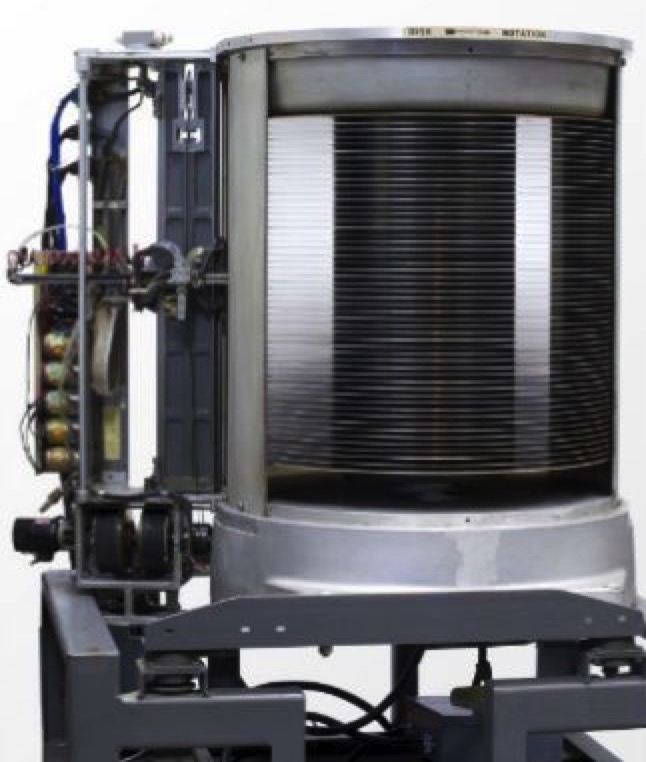History (1956): First Commercial HDD Shipped
IBM 350 RAMAC (5MB)
This is a Press Release edited by StorageNewsletter.com on March 1, 2018 at 2:06 pmThis article comes from the Computer History Museum.
1956: First commercial HDD drive shipped
Model 350 RAMAC unit stored the equivalent of 5MB of data on 50 large disks
Model 350 RAMAC actuator and disk stack
(Courtesy Mark Richards)

In 1954 Reynold Johnson assembled a team at the IBM R&D Laboratory at 99 Notre Dame Ave., San Jose, CA, charged with developing fast mass storage systems to replace punched cards and magnetic tape in accounting and inventory control applications.
Informed by Jacob Rabinow’s ideas at NBS, IBM developed and shipped the first commercial HDD, the Model 350 disk storage unit, to Zellerbach Paper, San Francisco, CA, in June 1956 as part of the IBM 305 RAMAC (Random Access Method of Accounting and Control) system.
An HDD stores digital data in magnetic material on rigid rotating disks. Information is written to and recovered from the disk by movable read and write units, called heads. Electronic circuits and software control the movement of the heads, process signal wave forms, and manage the overall operation of the system. On the Model 350, fifty 24-inch diameter disks stacked on a spindle that rotated at 1,200rpm stored 5 million, 6-bit characters at an areal density of 2,000 bits/square inch. Forced-air cushioned inductive magnetic R/W heads on an arm 800 microinches above the surface to create a hydrostatic bearing. An actuator moved the arm from disk to disk with an average access time of under 1 second. The 5 feet high by 6 feet wide unit weighed over one ton and leased for $750 per month.
Three generations of RAMAC drives were developed for the 305, 650, 1401, 1410 and 7070 computers before IBM announced the Model 1301 in 1961.
Capacity doubled in each generation.
An operating, restored actuator and disk stack is on display in the Memory and Storage Gallery of the Computer History Museum.













 Subscribe to our free daily newsletter
Subscribe to our free daily newsletter

